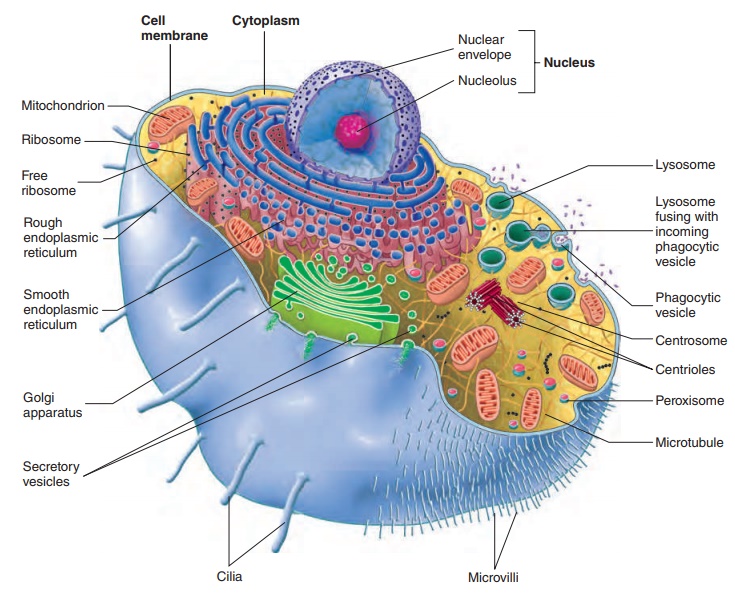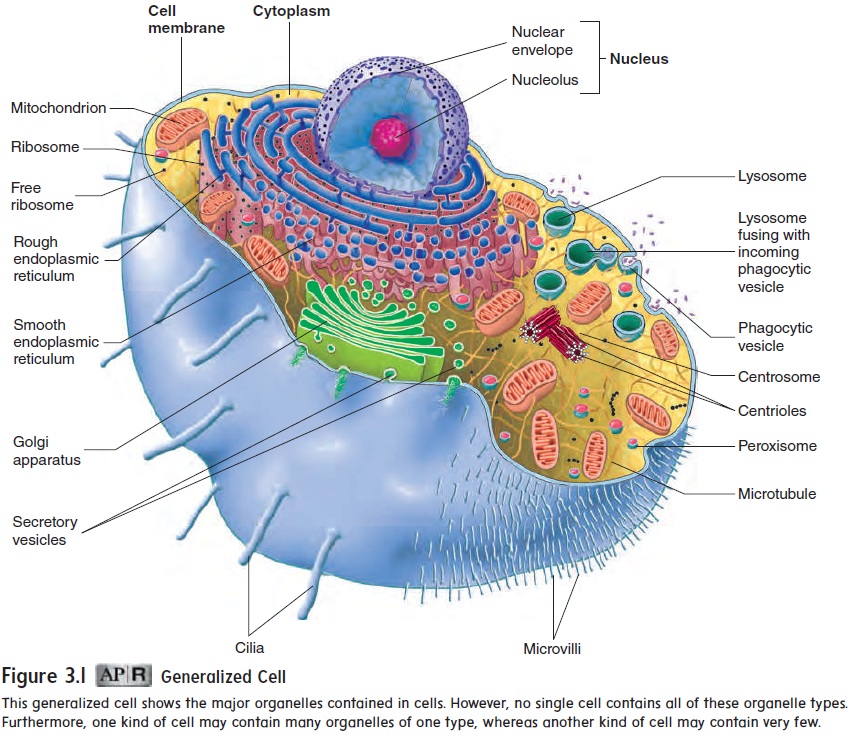Chapter: Essentials of Anatomy and Physiology: Cell Structures and their Functions
Cell Structure

CELL STRUCTURE
A. Explain how the structures of a cell contribute to its function.
Cells, in turn, determine the form and functions of the human body. From cellular function, we can progress to the study of tis-sues. In addition, many diseases and other human disorders have a cellular basis. The human body is composed of trillions of cells and acts as a host to countless other organisms (see “Microbes In Your Body: Getting to Know Your Bacteria”). Because the body is made of many, many cells, we must first understand the anatomy and physiology of the cell before we can understand the anatomy and physiology of the human body.
The cell is the basic living unit of all organisms. The simplest organisms consist of single cells, whereas humans are composed of multiple cells. An average-sized cell is one-fifth the size of the smallest dot you can make on a sheet of paper with a sharp pencil! But despite their extremely small size, cells are complex living structures. Cells have many characteristics in common; however, most cells are also specialized to perform specific functions. The human body is made up of many populations of specialized cells. The coordinated functions of these populations are critical to the survival of humans and all other complex organisms.

Each cell is a highly organized unit. Within cells, specialized structures called organelles (or′ğa -nelz; little organs) perform spe-cific functions (figure 3.1 and table 3.1). The nucleus is an organelle containing the cell’s genetic material. The living material surround-ing the nucleus is called cytoplasm (s̄ı ′t̄o -plazm), and it contains many types of organelles. The cytoplasm is enclosed by the cellmembrane, orplasma membrane.
The number and type of organelles within each cell determine the cell’s specific structure and functions. For example, cells secret-ing large amounts of protein contain well-developed organelles that synthesize and secrete protein, whereas muscle cells contain proteins and organelles that enable them to contract. The follow-ing sections describe the structure and main functions of the major organelles in cells.

Related Topics